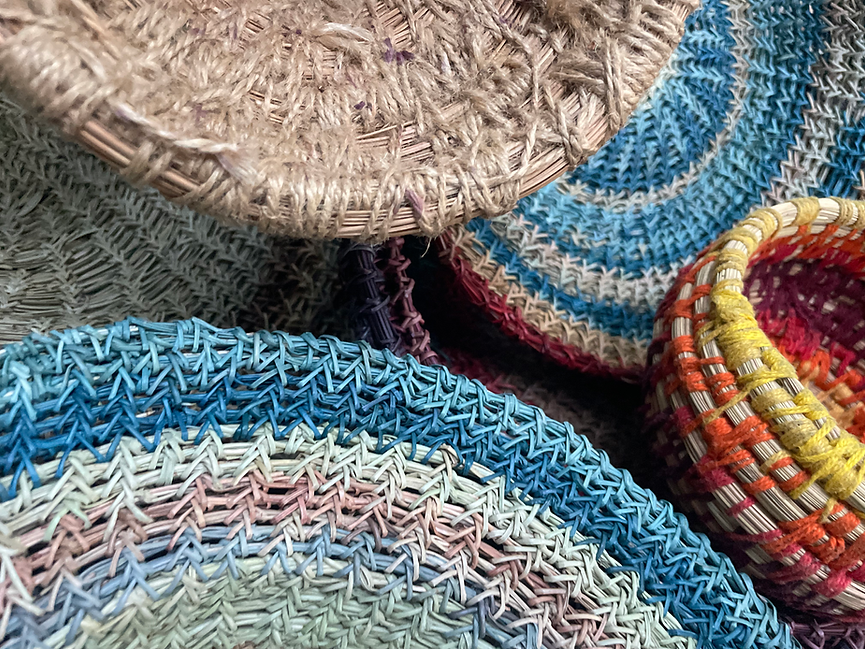

Where the Pines Grow
I’m Abeni Pierson, the creator behind Where the Pines Grow. Originally from Chicago, I moved to Northern California seven years ago. It was here, surrounded by towering pines and stunning landscapes, that I became intimately aware of the challenges posed by climate change.
Unlike plastic-based crafts, pine needle basketry uses a renewable resource that is biodegradable and eco-friendly. Every basket I make or teach others to make is a step away from the waste and pollution that plastic contributes to our planet.
By foraging for fallen needles and turning them into handcrafted baskets, I’ve found a way to help reduce this risk of wildfire, while creating something beautiful and lasting.
Through my workshops, participants become part of this effort.
Witnessing its impact on our forests and ecosystems inspired me to explore ways to connect with nature more sustainably and meaningfully.Through my craft, I specialize in creating intricate pine needle baskets—an art form that intertwines tradition, sustainability, and creativity.
Living in fire-prone regions, I’ve seen how important it is to manage the natural debris that accumulates on forest floors. Pine needles, if left untouched, can create a significant fire risk, acting as fuel for wildfires that threaten both ecosystems and communities.

I Put Down My Phone and Picked Up Pine Needles—Now I'm Connected to Something Real

In today’s world of constant notifications and endless scrolling, it’s easy to lose touch with the moment.
Pine needle basketry offers a meditative, screen-free experience that fosters focus, patience, and a sense of achievement.
From foraging for needles to cleaning, soaking, and weaving them into beautiful creations, each step is an opportunity to slow down, reconnect with nature, and immerse oneself in a purposeful process.
My workshops are designed to inspire mindfulness, encourage creativity, and give participants the chance to see time and effort materialize in the form of a handcrafted basket.


Together, we can turn a natural hazard into a creative solution that connects us to nature, fosters sustainability, and inspires others to rethink what’s possible.



































How Responsible Foraging Helps
By responsibly foraging fallen pine needles from fire-prone areas, I help reduce wildfire risks while protecting the environment. I’m careful to leave enough needles to support ecosystems, focus on high-risk zones, and avoid disturbing live trees. Through my workshops and events, I teach others how to sustainably gather and craft, turning potential hazards into beautiful, handcrafted baskets that make a meaningful impact.
Dense Pine Forests and Crowning Fires
In dense pine forests, the close spacing of trees allows fires to climb from the ground to the canopy, resulting in "crown fires." These fires are much harder to control and can spread quickly across large areas.
Resin in Pine Trees
Pine trees produce resin, a sticky, flammable substance that helps protect them from pests and diseases. However, during wildfires, resin contributes to the intensity of the fire. Dead or drought-stressed pine trees with dry resin are especially hazardous.
Pine Bark Beetles and Dead Trees
In recent years, bark beetle infestations, exacerbated by drought and climate change, have killed millions of pine trees in California. Dead and dying pines are extremely flammable, significantly increasing the wildfire risk.
Let’s shape a safer, more sustainable future, one pine needle at a time!
Join me in transforming our environment and communities—clearing brush, creating beauty, and making a real impact.

